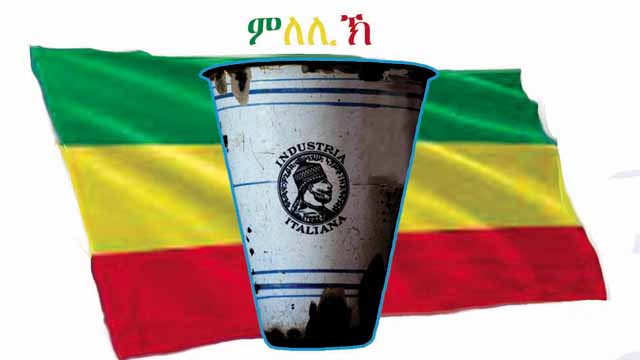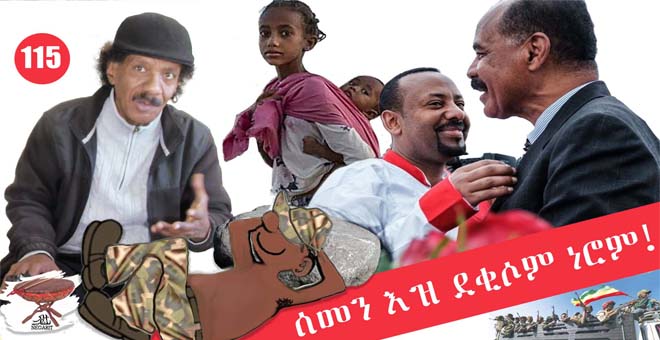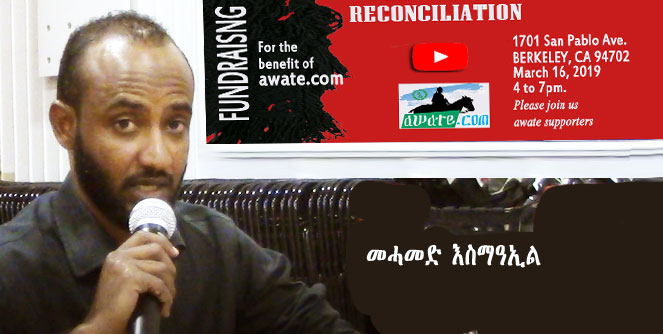Minelik and Mlelikh
Does God consider those who reject slavery as sinners? However, many offshoot narrations from the original divine books promote slavery in different forms. They could have been acceptable practices in ancient times, but they are repulsing by the moral standards of today. As far as religions are concerned, their timeless essence is virtue, compassion and respect for human rights and dignity.
Sometimes religious narrations contradict with provable scientific findings of ancient events and personalities based archeological, recorded historical facts and the like. I such cases, one must make his mind based on rationality, though the class of the “religious leaders” promote narrations that serve their interest and their allies in power. Worse, they hold societies hostage by duplicating ancient superstitions and heresies that contradict reason.
Ignorance is a bliss
One of the most ancient interpretation of a biblical narration still sustains the institution of slavery in all its forms:
Noah, a vineyard owner was drunk and took his clothes off and laid in his tent. His son Ham, father of Canaan, saw him naked and told his brothers, Shem and Japheth, took a garment and walked backwards not to see their father naked and covered their father. Noah was sober and discovered his young son Ham saw him naked. He cursed him to be the servant of his brothers. Noah said, blessed be the god of Shem for whom Canaan shall be the servant. And blessed Japheth, who shall dwell in the tents of Shem and Canaan shall be his servant.” Genesis IX 18-27
The quote doesn’t mention Ham’s skin color, however, Jewish, Christians and Muslim scholars of the time interpreted it to fit their prejudice and considered Ham black. This has been one of the major reasons for enslaving black people. And since, then, many civilizations have been preyed on black people!
Do you think God ordered the enslavement of black people?
Once I was driving to the North of Thailand in a taxi, to Shangmai and Shangrai, one of the most beautiful places on earth. On the way we run over a snake crossing the asphalt road. The driver stopped, walked back and went to the side of the road, picked a stick and kept hitting the dead snake. Then he dug a hole by the side of the road and buried the snake! He told me snakes are known to take revenge and if you kill one, make sure it’s dead and securely buried. If not, it will pursue you until it takes revenge. The driver is superstitious; I just smiled.
Abyssinians have a similar superstition though most of their revenge has no plausible cause or explanation. An urge drives them to seek revenge and make sure their victim is totally dead before they leave the scene. But those they chase are reincarnation or imaginary ghosts, of perceived enemies of their perceived ancestors from a folktale of a feud that happened centuries ago. They make sure that anyone who they think belongs to a segment that speaks, adheres to a faith, or an ethnic group like their perceived ancient enemies must be killed. Thus, the cycle of violence.
The symbols of Abyssinia
I the last few years, we are seeing scenes of vengeful Eritreans and violent Ethiopian mobs wrapped in ugly colored flags in demonstrations in a few cities around the world. The Ethiopian in such processions are the usual aggressive lots who think Eritrea is their lost territory and they must regain lordship over it. And the Eritreans are unprincipled, opportunistic, and confused. But what is the flag they wrap themselves in?
Over the last century, Abyssinians made several changes to their national flag. Originally, they rallied behind king Minelik’s green, yellow, and red flag. When Haile Selassie became a king, thanks to the British forces under General Wingate, he added an emblem of a lion with a line and a cross on the yellow. When the Derg took power in 1974, it removed the lion and replaced it with an emblem of blue rays, a red star, a green wreath embracing the logo and succeeded in making uglier. In 1991 the EPRDF an emblem with a yellow lined star and rays on a blue circles smack on the yellow part of the flag where the lion and the Derg wreath used to be. Officially, that is still the formal Ethiopian flag but the irredentists who gained influence in Abiy’s government reverted to the Menelik flag, plain green, yellow, and red. And Abiy’s government seems to be holding to it for tactical reasons—it’s expected to replace it with something else.
The always aggressive, fanatic and irredentist Abyssinians think that God designed the green, yellow, and red flag. They think it’s sacred because the clergy has been instilling that belief in the minds of the people for many years—and Ethiopia is still a semi-theocracy. But what is it to the Eritreans? Nothing more than the fact that it stands for bigotry, theocracy, chauvinism, oppression, and violence. It took Eritreans a lot of sacrifices to get rid of that symbol but now the neo-PFDJ nationalists are wrapping themselves with it in a shocking affront to the Eritrean choice to be free and have nothing to do with that flag. They are reviving the Menelik’s flag of slavery.
Minelik 2nd left an important legacy. Traditionally, Abyssinians used horns to drink local beer. During the regin of Minelik, the Italians introduced a cup with a head image of the king which became a popular brand of the cup. It became known as Mlelikh, a corruption of Minelik, the name of the mythical Minelik 1st. He was known as Ibn AlMalik in Arabic and Bin Melekh in Hebrew (meaning the son of King Solomon) and Minelik is a corruption of that. Apart from the cup, Some Ethiopian credit Minelik with building the Djibouti-Addis Ababa railway; in reality, Minelik lived barefoot and didn’t even have shoes.
Wuchale Treaty
In 1889 the Treaty of Wuchale, signed between Italy and Abyssinia to keep long-lasting relationship between the two empires. Minelik agreed not to claim territories in Eritrea if they let him plunder everywhere else. He ravaged all the lands from Adwa in the North, to Moyale in the South, to the edges of Somalia in the East imitating the European colonization drive– though worse. Menelik also agreed to stop slave trading in his territories. However, he continued his slavery campaign in the South and war captives continued to be a major source of his incomes. Worse, the Abyssinian Church justified his enslavement campaigns based on its version of the Biblical Curse of Ham: the primitive Abyssinian law, FetHe Negest (The Law of the Kings) which declared:
[The state of] Liberty is in accord with the law of reason, for all men share liberty based on natural law. But war and the strength of horses bring some to the service of others, because the law of war and of victory made the vanquished slaves of the victors.]— Fetha Nagast
With that law under his armpit, he continued enslaving people who didn’t share his faith. He enslaved large segments of the South and took control of their lands. So, is it surprising the country is still a semi-theocracy?
During the 19th century Menelik hunted the Shanqella, (Ben-Shangul or Beni Shenqil) and treated them as less humans. The stigma still survives. Racism against dark skinned people continues and its residual effects still clear in the culture.
Slave traders from Gondar, via Adwa, took hundreds of slaves mostly women, to Massawa. Abyssinian slaves fetched high prices in the slave markets; demand for the women were high; their price depended on their skin complexion: Tiqur-Qey, or QeyiH-Tselim (dark or light skinned). They became concubines and house servants. Eunuchs were second in demand depending on their age, the younger the better, and preferred to serve inside the household to guard the concubines, or religious sites.
The legacy is still alive. It’s believed that it took Mengistu Haile Mariam weeks to appear on public media because of the stigma of his skin color used against him by the imperial elite system of Haile Selassie that he dismantled. People still refer to him as ‘ye’he Barria’ (this slave) because of his complexion.
What has that to do with our current situation?
Today looks more like yesteryears though there are no more slave markets, but slave labor is prevalent and human life is still the cheapest in the region. There are no concubines, but rape and exploitation. There are no unhindered horde invasions but systematic control of others.
In short, fascism, bigotry, onslaught on peoples’ freedom and rights is till the same as it was a thousand years ago. Irridentist ambition by forces empowered by the Ethiopian and Eritrean governments are wreaking havoc in the region. And the situation doesn’t bode well with Eritreans whose hard-earned independence is exposed to great risks by reckless PFDJ leaders and their followers who lately displayed their true nature: warlords with no value but the urge to control and subjugate others. It doesn’t bode well for the future of the region and that is why the mad warlords must be stopped.
[The above is the script of Negarit #124 on Youtube]





Awate Forum